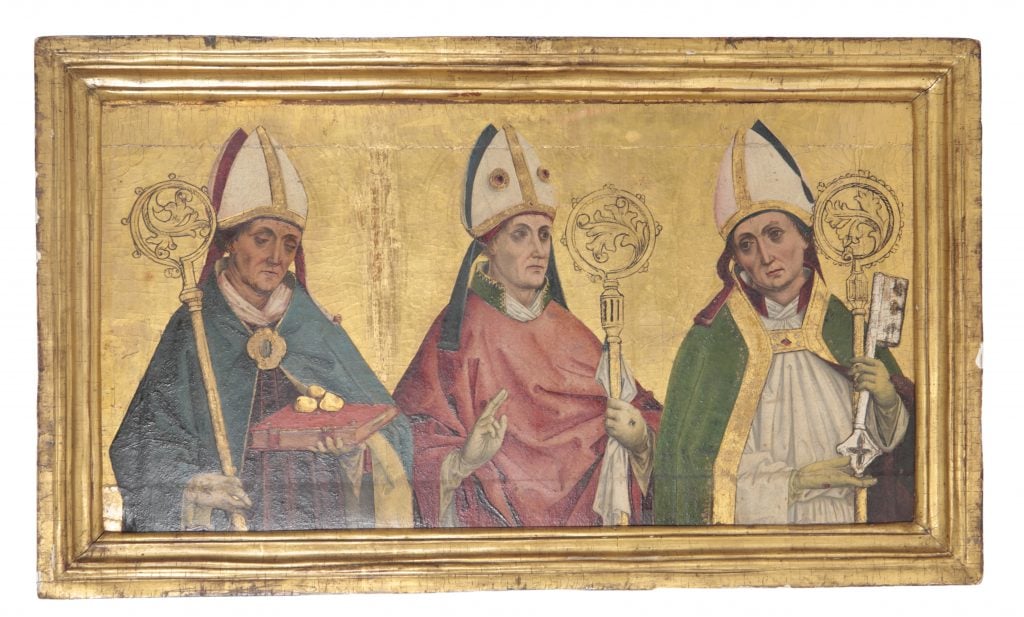Crime
A Golden 15th-Century Altar Panel Is Returning to a Museum 44 Years After It Was Stolen, Thanks to a Keen-Eyed Auction Researcher
The double-sided altar panel was slated to be sold at Duke’s Auctions.

The double-sided altar panel was slated to be sold at Duke’s Auctions.

Richard Whiddington

A 15th-century gold-ground altar panel that was stolen from York Art Gallery in 1979 is set to be returned, thanks to the keen eye of an auction house researcher.
Known as a Nuremberg School panel and dating from around 1480, it’s double-sided and depicts saints important to the Bavarian town of Nuremberg. The panel was one half of a pair donated to the institution in 1955 by F.D. Lycett Green and was due to be sold at Duke’s Auctions, England, before similarities with its York counterpart were spotted.
The auction house decided to pull the lot at the last minute and ask The Art Loss Register, the world’s largest private database of stolen art, to investigate the panel further. The register, which worked on a pro-bono basis, promptly concluded that the panel painting was the very one that had been stolen from the Yorkshire gallery nearly 45 years ago.

Nuremberg School panel showing St Lawrence, St Sebald of Nuremberg, and the Angel Gabriel. Photo: courtesy Duke’s Auction.
“We work a lot with [The Art Loss Register] to identify stolen pieces of art and regularly cross check all auction catalogues to make sure no pieces are marked as stolen on their database,” Guy Schwinge, a partner at Duke’s, told Artnet News.
Duke’s had come to auction off the panel after examining the contents of a house in the Southampton area, but the vendor knew nothing of the panel’s background, having inherited it from her father. Schwinge believes the original collector most likely bought it at a market or an auction house without knowing its provenance.
“We told the daughter that the painting was stolen 50 years ago and she was quite happy that it was simply returned to the museum,” Schwinge said. “No money changed hands at all. We are so grateful to her for being so straightforward about it.
After being transported north, the panel will be checked and conserved by York Art Gallery specialists before being reunited with its sister piece.
“We are delighted that this piece has been found and returned to York Art Gallery,” Morgan Feely, a Senior Curator at York Art Gallery said in a statement.
More Trending Stories:
The Art Angle Podcast: James Murdoch on His Vision for Art Basel and the Future of Culture
A Sculpture Depicting King Tut as a Black Man Is Sparking International Outrage